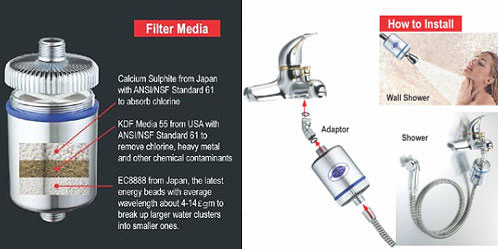Details
What is KDF redox process
The KDF redox process works by exchanging electrons with contaminants.
How Does a KDF Filter Work?
The KDF redox process works by exchanging electrons with contaminants. This "give and take" of electrons converts many contaminants into harmless components. During this reaction, electrons are transferred between molecules, and new elements are created. Some harmful contaminants are changed into harmless components. Others are electrochemically bound to the KDF media.
Free chlorine, for instance, is changed into benign, water-soluble chloride salt, which is then carried harmlessly through the water supply. Many heavy metals such as copper, lead, mercury and others, react and bond with the KDF medium's surface, thus being effectively removed from the water supply.
What's Inside?

What Contaminants Does KDF Remove?
KDF process media works to reduce or remove chlorine, iron, hydrogen sulfide, lead, mercury, magnesium, and chromium. It may also inhibit the growth of bacteria, algae, and fungi. Redox media removes up to 98% of water-soluble cations (positively-charged ions) of lead, mercury, copper, nickel, chromium, and other dissolved metals.
Removal depend on many factors, generally more than 98% of chlorine is removed in home water treatments, though this reduces to over 90% due to shower filters with high flow rates.
Why is KDF used in Shower Water Filters?
KDF is frequently found in home showerhead filters because of its effectiveness at higher operating temperatures and flow rates.


